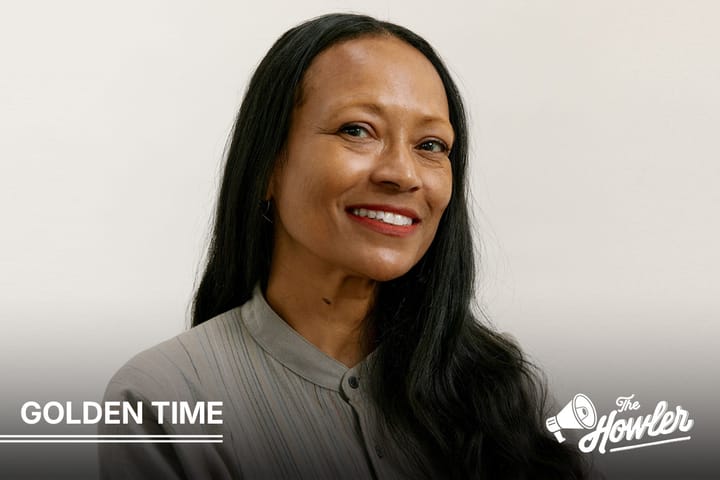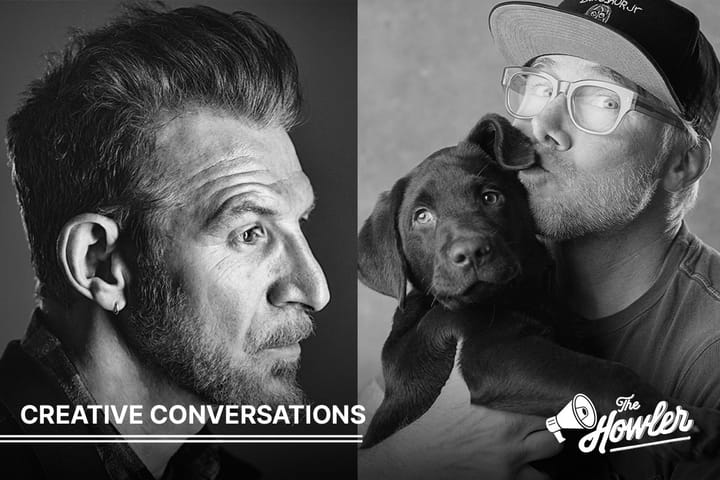H/L’s David Morrissey Adds Context to LIX’s Hits and Misses
A Brand Strategist shares his take on notable -- and less notable -- Super Bowl trends and subtexts.

Whether you were stoked to see the Birds fly or were hoping for a KC threepeat, this year’s Super Bowl broadcast left marketers with plenty to gossip about—and left a record 22.6M Americans with the “Super Bowl Flu” to start the week.
As a football fan, I look forward to the game every year, but as a Brand Strategist, I look forward to the post-game – the when we can examine the top spots that made the most impact on audiences, their overall themes, and what that means for commercial filmmaking in the year to come.
A few trends immediately stood out to me – some good, some not so good – but overall, there are some notable changes, considering what we gleaned from 2024’s Super Bowl! Gameplay aside, here are a few insights gathered from watching this year’s Super Bowl LIX:
Bring on the waterworks
Comedy has ruled the day for the last several years—at least in terms of how most brands try to entertain and stand out. And this year was no exception. The irony is that as more brands choose lateral or even bizarre storytelling concepts, more are less likely to be remembered after that last bit of guacamole is scooped. In fact, the editors at Ad Age described the Super Bowl Class of ’25 as “a lot of formulaic work.” Ouch.
Interestingly, when you look at the top-two ranked 2025 commercials from Ad Age, they’re stories that veered hard from a comedic tone: Google’s pull at parents’ heartstrings with “Dream Job” and Nike’s “So Win” that literally rolls its eyes at the double-standards women athletes must face.
Likewise, USA Today’s annual Ad Meter had 173,000 real people (read: everyday consumers, not Ad Age editors) rank every single spot. Instead of comedy, the top two ranked commercials on the Ad Meter leaned into cuteness, emotion, and stories that had us rooting for the underdog. Specifically, an undersized foal with Budweiser’s “First Delivery” and an undersized farmer with Lay’s “The Little Farmer.”
With widespread divisiveness as the backdrop, crafting stories of positivity or featuring heroes we can universally support in this climate makes a lot of sense for brands.
That guy who was in that thing
As you’re probably aware, 30 seconds of Super Bowl airtime cost an average of $8M in 2025, about a million dollars more than last year. Given the propensity of brands to rush to celebrity-driven or cameo storylines, total costs to produce and air a Super Bowl spot are, well, bananas. In 2024, eMarketer reported that 74 percent of Super Bowl ads featured celebrity appearances!
Typically, a brand chooses to feature a celebrity to borrow specific traits from them in an effort to transfer those traits to their brand. (Or, in the case of Little Caesars, they chose to transfer Eugene Levy’s eyebrows.) It can be a great long-term strategy. There’s a reason Matthew McConaughey is a repeat spokesperson for both Salesforce and Uber Eats—he brings sass and coolness.
But with seemingly every execution featuring a cameo or three, you have to wonder if the short-term association is worth it for most Super Bowl advertisers. Of course, long-term rights negotiations for brands are another challenge of going with the celebrity-driven route.
For instance, two of last year’s top USA Today Ad Meter performers Verizon, with Beyoncé, and State Farm, with Danny DeVito and Arnold Schwarzenegger – have already been pulled from viewing on YouTube. Presumably, these brands have only negotiated single-year rights with expensive celebrities. Compare that to the Farmer’s Dog’s narrative-driven Super Bowl spot, “Forever,” which won the USA Today Ad Meter in 2023. It continues to be live on YouTube with 35M views and counting. Because of its popularity, Farmer’s Dog has been able to bring it back repeatedly for additional broadcast and OTV media buys.
No girls allowed?
Speaking of celebrities, I couldn’t help but notice that nearly all celebrity-driven spots featured white male celebrities. This was especially striking given that so many narrative-driven commercials told stories of female empowerment, like Lay’s “The Little Farmer,” The NFL’s “NFL Flag 50,” and Dove’s “These Legs.” It also felt like a complete misstep, given that the NFL recently hit its highest record of women viewership and its highest favorability among Gen Z and Millennial women, per Morning Consult.
While a few brands stepped up and led with women celebrities—like Wanda Sykes, Issa Rae, and Aubrey Plaza—they sure were outnumbered by the Beckhams / Damons / Afflecks / Ramseys / Bradys / Goggins / Fords / Levys / Culkins / Powells / Diesels / Gillis’ / Offermans / Brodys / McConaugheys / Post Malones of the world, to name a few. Indeed, Ad Age also noted that “Super Bowl LIX advertisers appear to be dialing back efforts around diversity and inclusion,” presumably to avoid drawing the national attention of DEI opponents.
If there was one very notable exception to this rule – and it was a favorite from the broadcast – it was Nike’s athlete-driven “So Win.” In 2024, Nike allowed competitors like Hoka to gain shares while weirdly delaying styles promoted by US Summer Olympians from reaching store shelves when they would best sell.
As part of a comeback strategy, Nike bought Super Bowl airtime for the first time since 1998 and, unlike most advertisers, opted not to release the commercial early online. The result seemed to build more anticipation. Indeed, at the Super Bowl party my wife and I attended, it seemed to be the only spot that drew quiet and attention from everyone in the room. Brandwatch Consumer Research reported that Nike was the most-talked-about advertiser in real-time, earning a quick 13,000 mentions and high praise across various online platforms.
More humanity, less robot-ity
With so much recent talk about generative AI and what it will ultimately mean for the ad industry, it stood out that (to the best of our knowledge) no brands elected to create commercials entirely with AI. Indeed, Adweek reported that even OpenAI’s animated Super Bowl debut, “The Intelligence Age,” was animated by human creatives using a mix of 2D hand animation and 3D procedural rendering.
This is noteworthy because, in 2023, two AI-created brand spots for Toys R Us and Coca-Cola were released—and both were largely lambasted. It looks like Super Bowl advertisers got the memo.
Our H/L 2025 Key Consumer Trends report noted growing consumer skepticism around how AI is being used. When we dug deeper, we learned consumers are not so much anti-AI, but they’re concerned about their own data and growing increasingly frustrated by being forced to use AI tools when they want to interact with a person. It makes sense, then, that many of the Super Bowl spots for technology-led brands were careful to bring a softer human (or animal) touch into the equation, like the dad navigating parenthood and job interviews in Google’s “Dream Job,” or NerdWallet’s “Genius Beluga” that featured Kieran Culkin’s charming delivery.
From laugh-out-loud moments to stories that pull at your heartstrings to some occasional missteps, Super Bowl LIX demonstrated how brands intend to capture attention in a crowded space in 2025. But as we look beyond the big game, the question remains: what makes an ad truly stick? Whether it’s storytelling over spectacle, authenticity over AI, or simply knowing when to let the work speak for itself, this year’s trends give us plenty to think about as we move forward.
David Morrissey is VP, Director of Brand Strategy at H/L.



